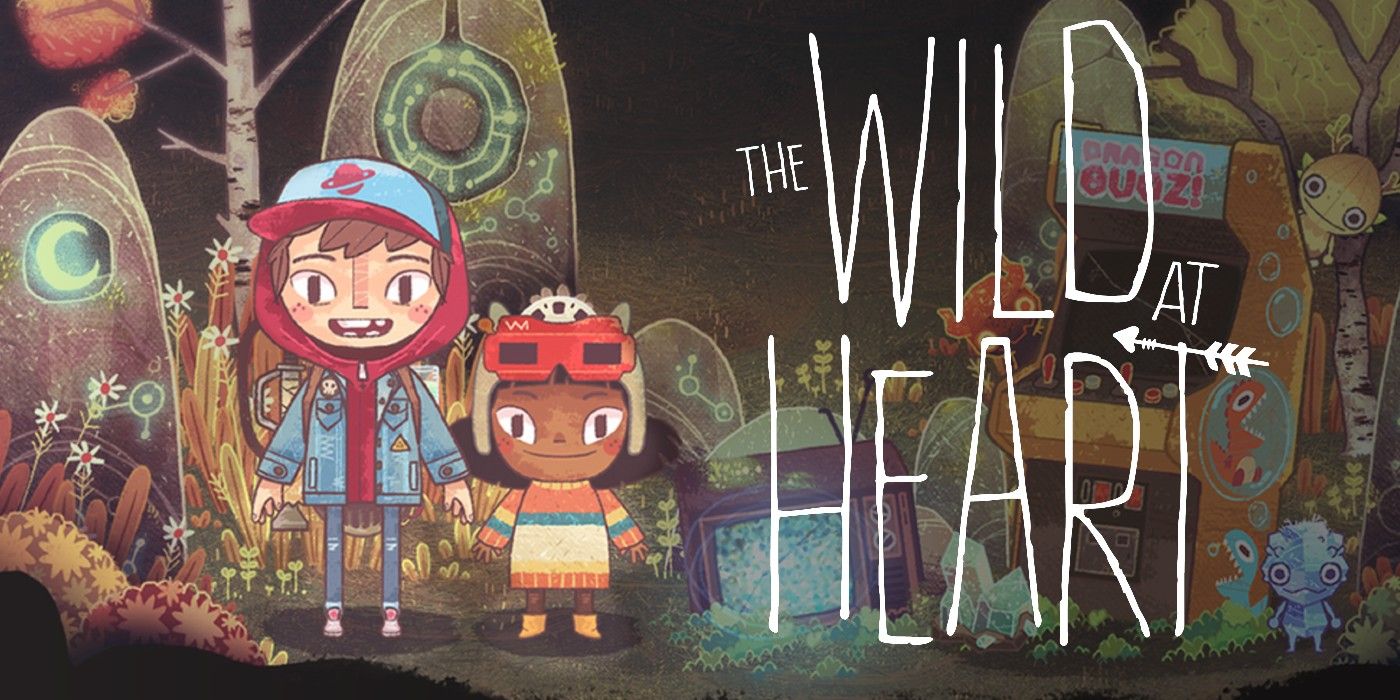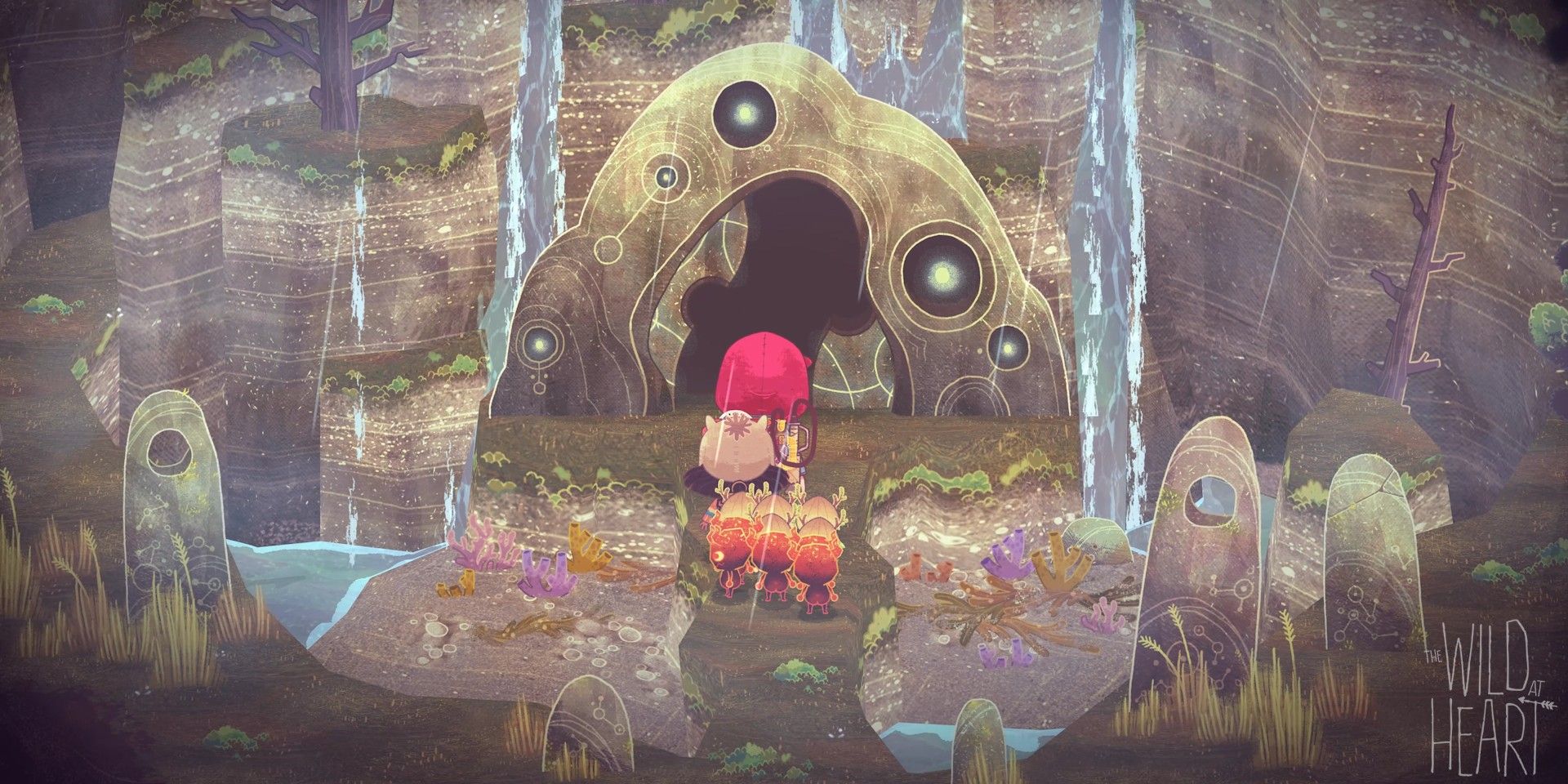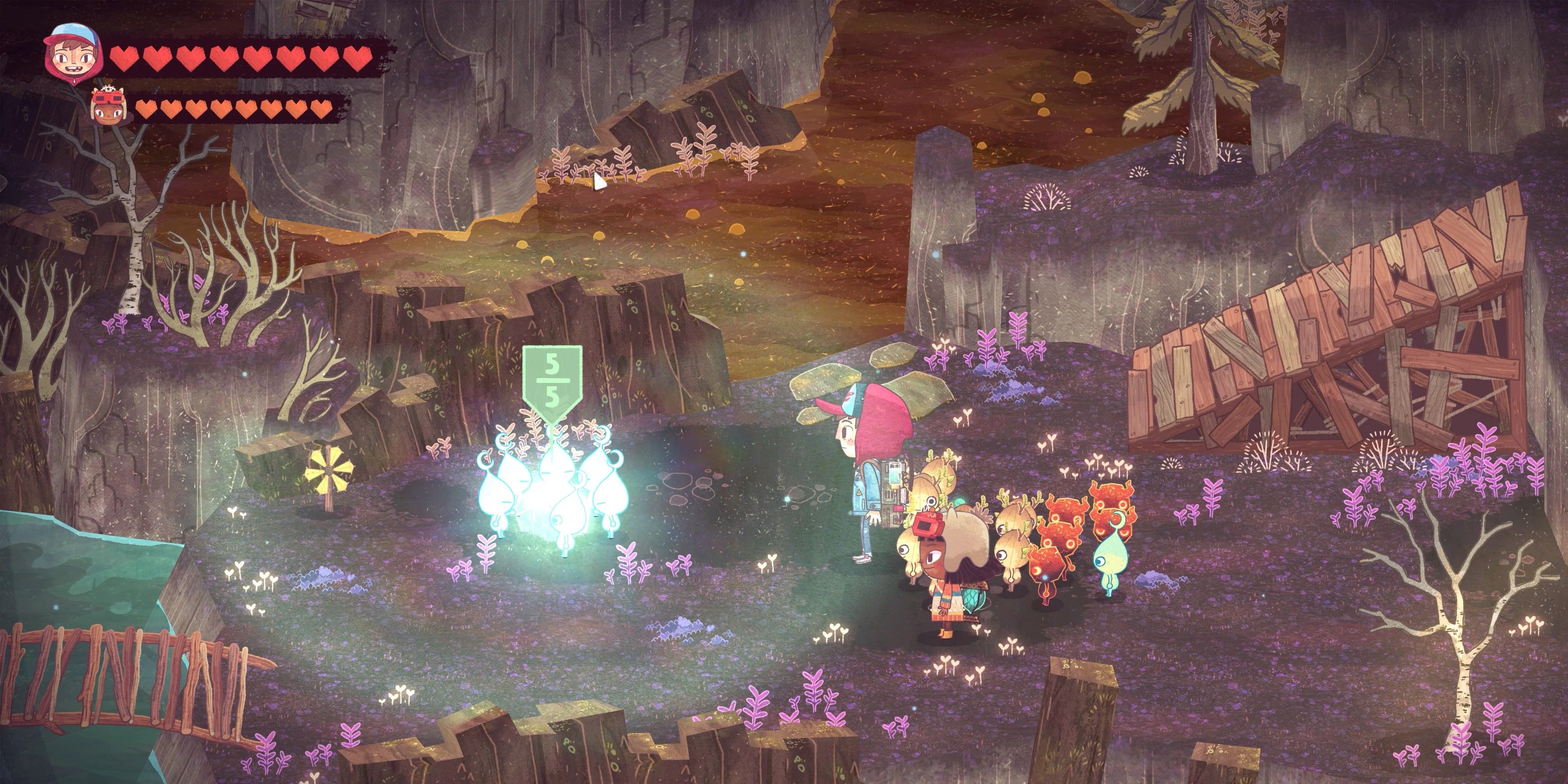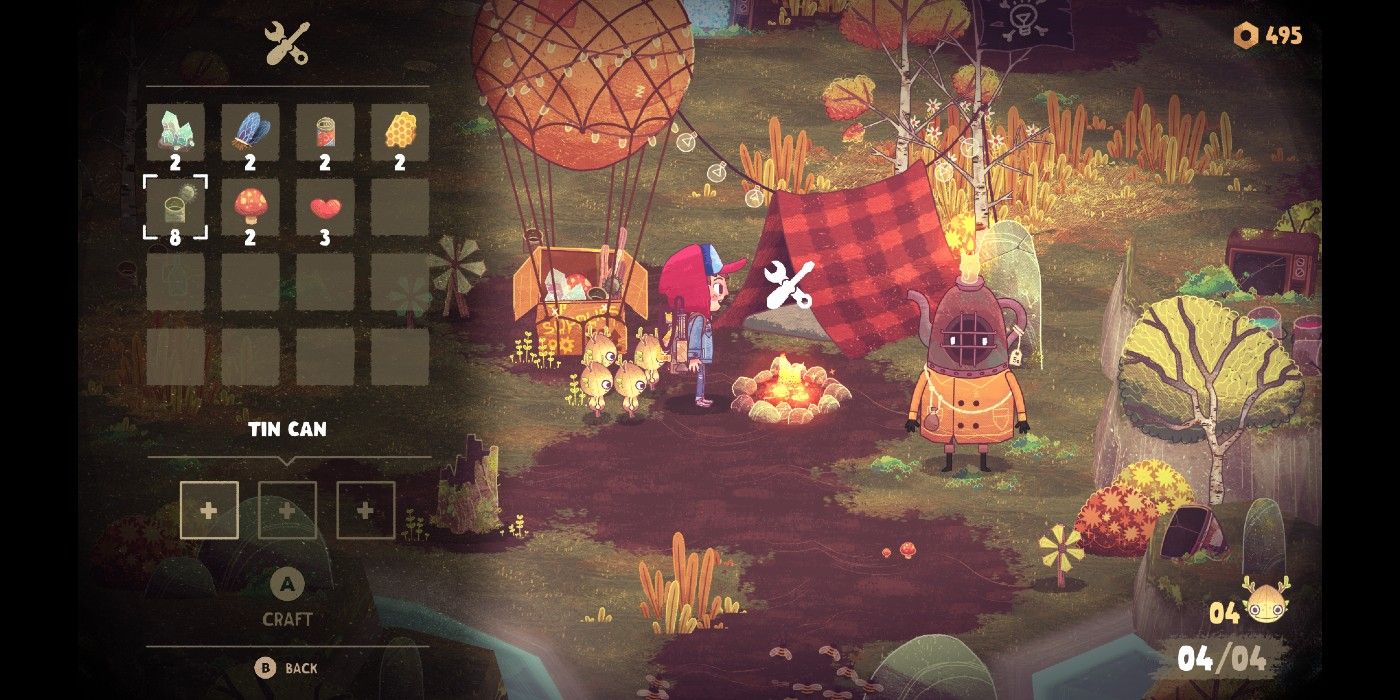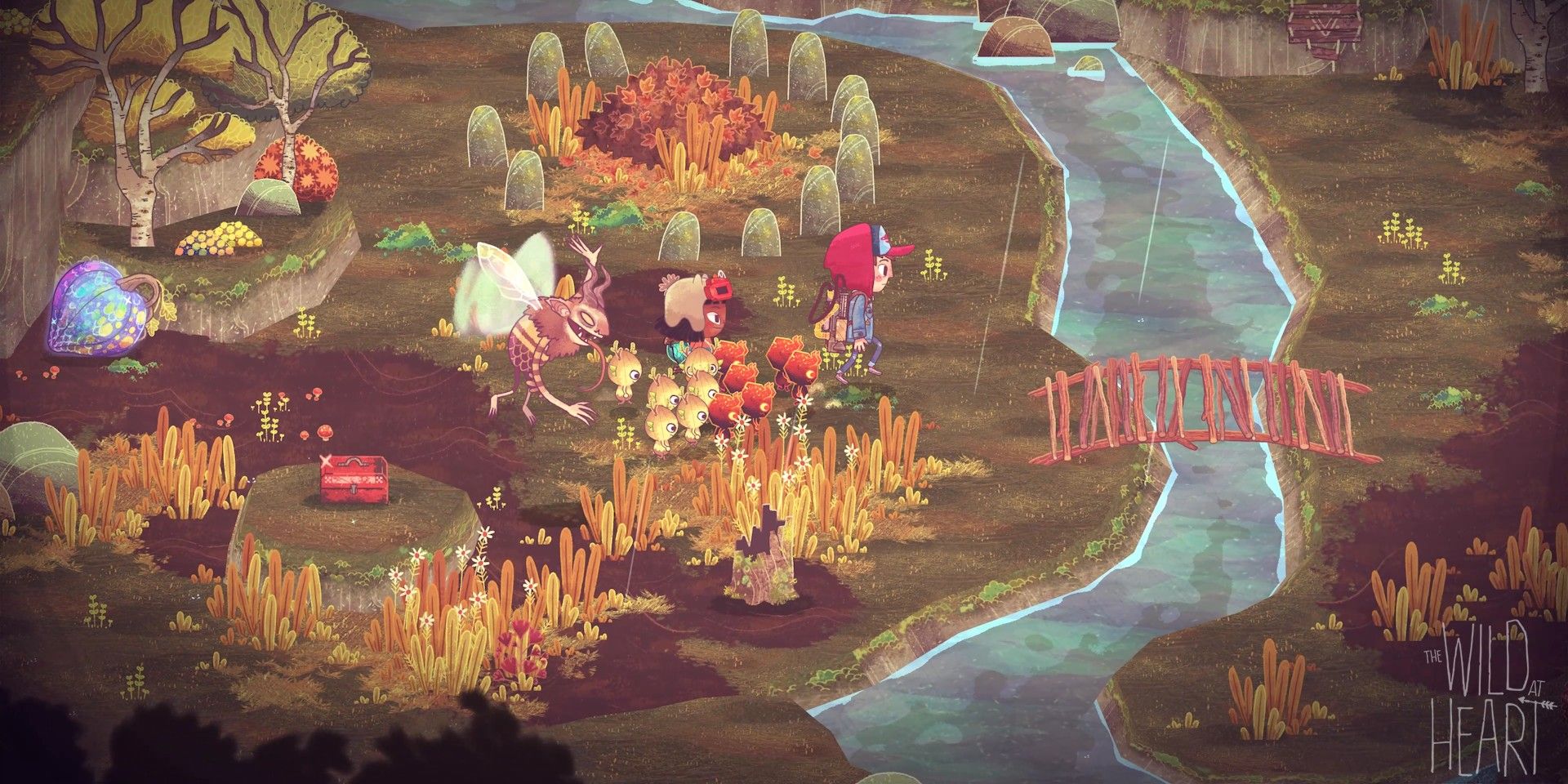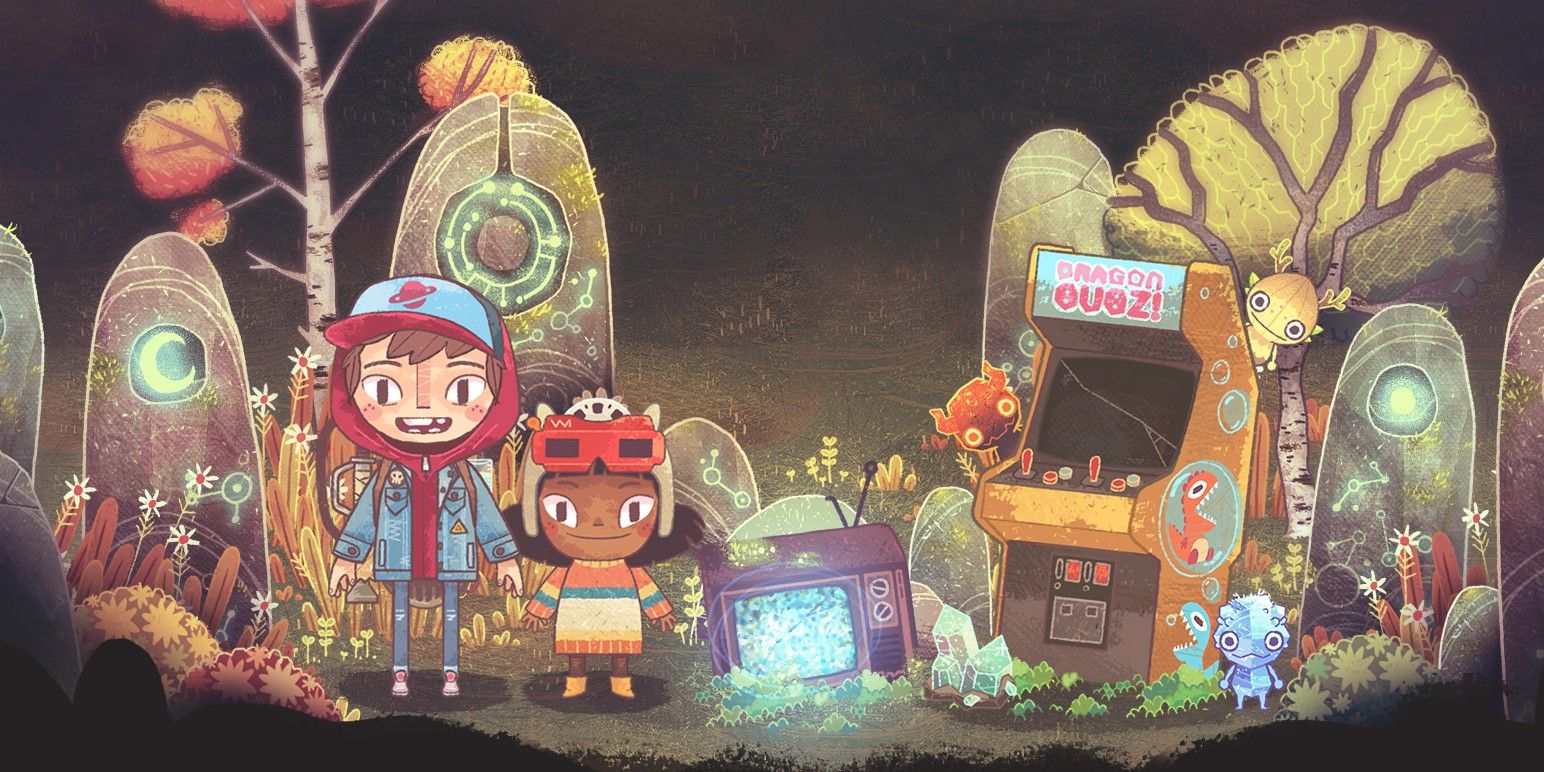New indie release The Wild at Heart brought players deep into the woods on a journey of self discovery, filled with creative monsters and adorable little Spritelings to help along the way. The first release from development studio Moonlight Kids, the game presented a cohesive experience that combined combat mechanics and puzzle-solving in a richly animated environment, using them all to tell a compelling story. The end result is a beautiful game worth diving into.
Moonlight Kids developers Chris Sumsky and Ankit Trivedi sat down with CBR to chat about The Wild at Heart. They dived into their inspiration for the game and level design, their history with programming and how The Wild at Heart is like a salad. They also took some time to engage with long-standing debates in the game design world and explain their Super Smash Bros. mains.
Can you tell us a little bit about Moonlight Kids -- How did it form, and how did you all meet?
Chris Sumsky: Ankit and I have known each other for a long time actually, since college -- we both went to Georgia Tech and we started making games together then. We first were doing it under the moniker of Crystal Fish in our spare time. Then, fast forward, we quit our day jobs and did that full-time, making mostly work-for-hire games for Cartoon Network. We did that for a little bit, and then fast forward again. Justin Baldwin is the third partner of Moonlight Kids, and we have known him for a few years in the dev community. He had the idea for The Wild at Heart, and we kind of just made a super team. That is Moonlight Kids. Ankit, I don't know if you have anything to add there?
Ankit Trivedi: That was a good summary. Justin was also part of another team, SleepNinja, and he and Alex were working on that. So the four of us also got together -- Alex isn't a partner per se, but he's a big contributing member.
So what's the origin story of The Wild at Heart in particular?
Sumsky: That's a good question...sometimes it's like, "When did it start?," tracking down the actual origin. Justin and Alex, who Ankit just mentioned -- Alex, he is our writer, narrative designer -- were formulating the idea for The Wild at Heart as early as 2017 conceptually, and Justin was doing sketches. I think they were drawing from personal experiences and asking, "What's a story that we want to tell that relates to us and our journey?" I think they've often said that Wake, the protagonist, is sort of an amalgamation of the two of them in a lot of ways.
Then, once we all joined forces, it started to become a real thing. We were pulling inspirations from a lot of different things that we love. This might be kind of a strange one to hear, but we're huge fans of Dark Souls, which we do draw some inspiration from in terms of how we wanted the world and level design to feel. Like those moments in Dark Souls where you've been out for a long time journeying around, and you're like, "Oh my gosh, I'm definitely gonna die. I really need to get back to a bonfire." And then you'll just open up a shortcut and turn a corner and you're like "Oh my gosh, I'm back here!" That feeling of looping back and unlocking a major shortcut, we just love those moments. We really tried to pull a lot of that into The Wild at Heart, just as one example. But yeah, we were trying to make a game that we would want to play, and hoping other people will like it too.
Trivedi: Right, that's the core, pretty much. What we like we tried to put in the game because, you know, they say make a thing you'll also want to play.
What were some other inspirations either for you as game designers or for The Wild at Heart in particular?
Trivedi: I think one of the bigger ones we wear on our sleeve is Pikmin -- that's a huge mechanic-wise inspiration there. You also notice Wake has a Gustbuster -- that's kind of Luigi's Mansion-y, controlling the world with this tool that Wake made. Other little things, it's kind of hard to even remember off the top of our head. The pinwheels that you see...being able to get scrap out of those is Mario-inspired. The two big ones are Pikmin and Luigi's Mansion.
Sumsky: A lot of Nintendo, for sure. We grew up on Nintendo -- Mario, Zelda, all those things -- those are the games that we're really nostalgic for and love, as a lot of people do. So there's a lot of that in it. I really love to design from an emotion or a feeling of "What's the vibe that I want someone to take away from this area?" and trying to work backwards from that. We have some areas where the goal is right smack in the middle and you see it right from the beginning, and then the level design is doing these loops. In my head, it's like flower petals. You loop out from the center and you get what you need and you come back in. Sometimes, the design of an area and the feeling is like having your home base and venturing out further and further, unlocking those shortcuts I mentioned before.
Sometimes, the design of the level's more linear, it's like, "I'm just passing through this area, and it's dangerous, and I need to go that way -- but it's blocked. So what do I do to get there?" The feeling there is working through a problem and unblocking a way. Usually, with those kind of areas, we'll have you take a lot of wiggly detours so you come out the other end thinking, "Cool, I'm where I needed to go -- break a wall open and I just have a permanent path through." I really like, especially in level design, designing from a point of what the player is going to take away from it in the end, the feeling they're gonna remember. Hopefully that comes across.
I think it does. Do you draw from any non-game inspiration sources? From what I've played, it gives off a lot of Over the Garden Wall-type vibes and even some Miyazaki vibes with the spritelings and the Kodama forest spirits.
Sumsky: Absolutely
Trivedi: Nailed it.
Sumsky: Justin's mentioned those specifically.
Trivedi: Like literally.
Sumsky: That's great. And like Ankit was saying about Pikmin, we tend to wear our inspirations on our sleeve. We're not really hiding those things. We love what we love, and people who love them too, I think, will latch on to it. But we tried to do it justice in our own way that feels like an homage or a spin on a thing, and not necessarily just, "That was cool, we're gonna use it, too." But Over the Garden Wall is also a reference Justin has mentioned. I think we said Justin does all the art and animation and if we didn't, that's his big contribution to the game. He does probably every art asset in the game, a lot of the animation and a good bit of the level design as well.
So Over the Garden Wall, Cartoon Saloon, their movies -- sothey have The Secret of Kells and Song of the Sea, Wolfwalkers I think is their most recent one -- but that art style and storytelling style is another big inspiration. Sometimes, inspiration just comes from nature. Maybe it feels a little cliché to say, but I'll be out hiking and see a cool path or feature and think, "Oh man, that gives me an idea for a little puzzle." Then, I'll have to run through the puzzle in my head like a million times so I can remember it by the time I get back to a piece of paper.
How did you two start coding, what was your entrance into the world of programming?
Trivedi: Oh, man, that's a great question. When I left high school to go to college, people told me "Oh, don't do game development. That's not lucrative." I believed them, I was a kid. So I got to college, and I said "I'll do some some other kind of engineering like, whatever, math." One of the neighbors in the hall in our dorm was doing programming on a TI-84 calculator and taught me to make a fun little matrix program where ones and zeros crawl across the screen. That was kind of it; my head exploded, and I was like "I can like do stuff on a computer and make things appear on a screen." That was really my intro to making a game, something that you play and interact with. So it just started from there. Luckily, like Chris said, we met in college and started making games, and that was the big jumping off point.
Sumsky: For me, I never even considered writing code. I never really made an explicit decision to do it. When I got to Georgia Tech, I wanted to make movie. The closest major Georgia Tech had to that was called Computational Media, which was a split major between the Liberal Arts College and the College of Computing. It was the closest thing I could get to, and as part of that major, you had to take programming courses. I took them because I had to at first while doing all these film classes -- and then I ran out of film classes.
Also I did a film internship one summer and absolutely hated it. I said, "I don't think this is the industry for me." Meanwhile, I thought, "Programming is fun," and it really fit with my brain. I like problem solving and how you can write code over here and then there it's working. It's kind of like [Trivedi's] calculator story, but I was 20 years old and doing it on the computer. Kind of slowly it turned that way for me where I was like, "Wow, maybe I can actually make a career out of making games."
The Wild at Heart is done in Unity, right?
Sumsky: That's right.
Is Unity necessary for this game or could it have been done in some other system?
Trivedi: Yeah, totally, could have been in any system. I think any good tool would not make you dependent on it per se. So this could have been done in Unreal, it could have been a custom engine, GameMaker, Unity, anything.
Sumsky: We leaned into a lot of Unity tools, for sure. Part of the reason we like Unity is its extensive toolset and plugin set. The asset store for third party stuff is deep deep deep, so if you need to, just go find something. We took advantage of what Unity offers for sure.
Trivedi: Yeah, that's true.
Sumsky: If we were like, "Hey, let's port it to another engine," it would not be easy, because it is heavily integrated in Unity's tools. But if we had started from the beginning, yeah, it could have been written in any tool, for sure.
Trivedi: We did Unity because, when we were in college, it was what was free and what was new. We just started using it and getting better at it. Now, it's just like, "We know this, let's just work with what we know." We could have started over.
Sumsky: I feel like we've kind of grown up, so to speak, with Unity.
Trivedi: We have, for sure.
Sumsky: When we started, Unity wasn't brand new, but it was pretty new. It's gotten better. It was for indies and hobbyists, and that was pretty much the only people using it -- aside from students, which is what we were. Now, you see some of the things coming out of Unity, and you wouldn't be able to tell them apart from something coming out of Unreal or a proprietary AAA engine. Unity is not paying us to say this, by the way.
Trivedi: Right, we are not sponsored. We just use the tool so much and we know what we like about it.
Was there one particular mechanic or story beat in The Wild at Heart that kept you excited about it as you were working?
Sumsky: Good question, let's see. Story-wise, Kirby is amazing. She is Wake's best friend and co-conspirator, and they plan to run away into the woods. You meet up with her a little bit into the game, and once you do, she sort of steals the show. She's just so spirited and smart and funny and doesn't put up with any crap from Wake either, which is great. And her evolving story -- obviously I'm not gonna say any spoilers -- but her evolving story was really motivating for me and actually reverse-informed a lot of design decisions too.
As you start the game, it feels very much about Wake and the Gustbuster. But as you get deeper, we wanted it to feel like a mix leaning towards Kirby. We wanted to shift the focus a little bit. If you're paying attention, later areas in the game tend to have a bit more Kirby stuff, level design-wise. I really liked her and her whole story. So kudos to Alex for all of that.
Trivedi: Totally. For me, I think story-wise, the Never and what that's all about really intrigues me. Whenever we get to see them in the spotlight -- "it," I would say "it" in a spotlight -- it excites me. Mechanic-wise, specifically, just like Spritelings -- I think it feels really good to throw Spritelings at a thing and just get them to do the task, whatever it is. That just feels good. And I really liked that, as a ubiquitous thing from the whole game, it's just always fun.
Sumsky: Yeah, it's like you wrote that AI and it's still fun to see what they will do.
Trivedi: Yeah, it's crazy.
Sumsky: It's like, "What are you gonna do?" Sometimes they'll do stuff that surprises you, and it really feels like they have little minds of their own. Even though we know the code, we still think, "What are you doing? Why'd you go over there?" As if they decided to do it.
I feel that -- the first time I got one stuck somewhere in the wilds I freaked out.
Trivedi: Yeah, it's crazy. We wanted (and it's great that it worked) this attachment people get with the Spritelings, feeling like, "Oh, no, I need to save them, I need to hold on to them." During one of the runs I did in playtesting, I was very adamant about not killing Spritelings. It was really hard, but I did a pretty good job of it. It's nice that people feel connected to them.
Sumsky: Early on, I had this vision of, "Man, every Spriteling, you should be able to name it." It's like a buddy, permanently. When you go to revive them, or "hatch" them as we call it, the names [would have been] in a list so you can say, "Oh, there's Scooby. He died tragically, but I can bring him back." I really wanted that because the feeling of losing a Spriteling that you named will just really hit. For a lot of reasons, we didn't end up being able to do the naming stuff -- we were calling it persistent Spritelings -- because for one thing, visually what would it look like? You have 60 Spritelings, so 60 little tiny name tags floating over their heads -- it'd be disgusting looking. So we didn't end up doing that.
But I think we still were able to get the feeling across because every time we see someone kill a Spriteling, they're just like, "Ah, holy crap!" We tried to seed in other ways early on with the little emotes between them -- like when Wake gets the first Spriteling out of the leaf pile, it used to be you just get them and the pop up happens and you went on your merry way. But we added a little conversation between them, so it tries to form a bond between Wake and the Spritelings. Really, we're trying to form a bond between the player and the Spritelings. We seed in a few of those moments too, in the beginning of the game so you feel something for the little guys.
Trivedi: The last thing I'll say about that is also the death animation -- the little ghost that pops up, it's just so haunting. It's like, "No!" But they're okay, they're okay.
One of the things I think The Wild at Heart does really well is mix this emphasis on combat and exploration with its story-rich environment. It's trying to tell a story, and it's doing that through some very rigorous mechanics. I'm hoping you can speak a little bit on this debate between gameplay and story, the ludology and narratology debate -- where do you fall on that?
Sumsky: It's a funny thing for me to even consider that our little silly game would have any part to play in the ludology debate.
Trivedi: Yeah, totally. It's crazy.
Sumsky: When most games people talk about are like, I don't know, The Stanley Parable or Defense.
Trivedi: Detroit.
Sumsky: It's really funny --I mean, I won't go into it, but one time at a game dev event here in Portland, me and a couple buddies were getting into a debate about the role of narrative in games because of this scholar, I guess I'll call him, who writes for the Atlantic, Ian Bogost, who is an old professor of mine. He had done some troll-y type article saying, "Narrative has no role in playing games," because, you know, that's kind of how he he can be sometimes. Ian, if you're reading this, love you. But we got into this debate, and I sort of took on the role of Ian's side just to kind of fuel the fire a little bit, and it was really fun.
But anyway, yeah, I think games can tell stories in an extremely unique way that no other medium can -- and they should. If anyone's played Outer Wilds...
Trivedi: Knew it was coming.
Sumsky: Yeah, I have to talk about that game. I mean, I just got goosebumps thinking about it, because that game tells a story in a way that literally no other medium could. It's totally incredible and kind of mind-blowing when you get through it. We're not on that level with The Wild at Heart, for sure -- and we're not trying to be, by any means. But I think that game opened my mind to like, "Wow, games should be doing this." This is what this medium can be doing in storytelling. Nothing against visual novels or anything, but those are moving comic books in a way. Like our game, you could see it that way. You could say, "Oh, yeah, you could tell the story of The Wild at Heart in a comic book" or something like that. And that's great, I think that's awesome.
But if we're talking about the conversation at large, when I played Outer Wilds, I said, "Wow, this could literally not be told in any other way." I think what we've tried to do with The Wild at Heart is take a genre like Pikmin (if you can consider it a genre) that was very mechanics-focused and had very little story except for what's needed to thread the whole thing together. We said, "Let's take that because we love that gameplay, and motivate the whole thing along with an interesting, deep story with a lot of cool, crazy characters." I think that's something games can uniquely do: take a deep, interesting story and push it along with interactivity and mechanics and stuff like that. Ankit, sorry, I just talked for like 10 minutes straight.
Trivedi: No, that's okay. I don't want to speak for you, but tell me if you agree with this: I think it's okay for gameplay and story to be like a salad. They don't have to be blended together. Salad is still enjoyable, right? You can get, I'm thinking of a caprese salad, a tomato and a piece of mozzarella. That's fine, that's totally okay. I don't think it has to be a salad smoothie.
Sumsky: Yeah, that sounds disgusting.
Trivedi: Right, well I should just say a fruit smoothie then.
Sumsky: Salads are already disgusting and then you blend them up? No, I'm just kidding.
Trivedi: So yeah, The Wild at Heart, in that analogy at least, is a salad, and I'm happy with that.
Sumsky: People are gonna take away from this that Chris Sumsky hates salads and visual novels, I think.
Trivedi: And Ankit can only think about salads. He must be hungry.
Can you tease what's coming next for Moonlight Kids? I know you're obviously dealing with a launch right now, but are you working on anything behind-the-scenes?
Sumsky: Honestly we don't know yet. If the game is successful enough and the opportunity warrants it, it'd be fun to do some DLC for this, just to kind of keep it rolling. We love what Hollow Knight and Shovel Knight -- and I think Dead Cells -- were able to do. They saw some success, and just kept pumping content into it for a while. So that would be fun, if we could. Obviously we're thinking about next games too, but nothing to report there yet.
Trivedi: I'll tell you the immediate future is trying to fix bugs and patch the game as quickly as possible. We understand that there's probably a vocal minority of people who may be yelling or complaining about things, but there are still issues, and we still want to put our best foot forward. So we want to get those out ASAP.
Sumsky: Yeah, we want to make sure that we don't just walk away from this game because it's out.
Trivedi: We put too much time into the, right? We can't just leave a broken thing out there. It's not broken -- broken's not fair, sorry, Chris.
Sumsky: For the occasional bug that people are hitting. We try to talk to each person individually if we can and be like, "Oh, let's see what's going on," help them through it. That's where our time is at the moment.
Can you tell me who each of you mains in Smash Bros?
Trivedi: Absolutely we can. Chris, wanna go?
Sumsky: Yeah, Fox is my my guy. Melee is my main Smash that I've put a lot of hours in. I played a little bit of Ultimate when it came out, but yeah, Fox.
Trivedi: If we're doing Melee, it's Falco. If we're doing Smash 4 (because I don't touch Brawl) it's Little Mac. And if we're doing Ultimate, I haven't picked it. I think Captain Falcon and maybe Richter.
Sumsky: Wow, you have a lot of mains.
Trivedi: I have a lot of different mains for different games, yeah. Oh, and 64 is Link.
Sumsky: It's fun to know that I could still beat you with Fox on any of those.
Trivedi: Yeah, yeah, yeah.
Sumsky: Shut down the zoom call!
Trivedi: That was such an appropriate question to ask of us. I mean, we love Smash, it's one of the things we bond with.
Sumsky: Do you just find that all game devs have a Smash main?
It's probably a safe assumption, but it was actually in your bios on your website.
Sumsky: Right, right. Okay. Wow, I haven't thought about those in like two and a half years.
Trivedi: Oh my god, does my thing still say I'm the bad boy of the group?
(It does.)
Developed by Moonlight Kids and published by Humble Games, The Wild at Heart is available now on PC, Xbox Series X and Xbox One. A review copy was provided by the publisher.

